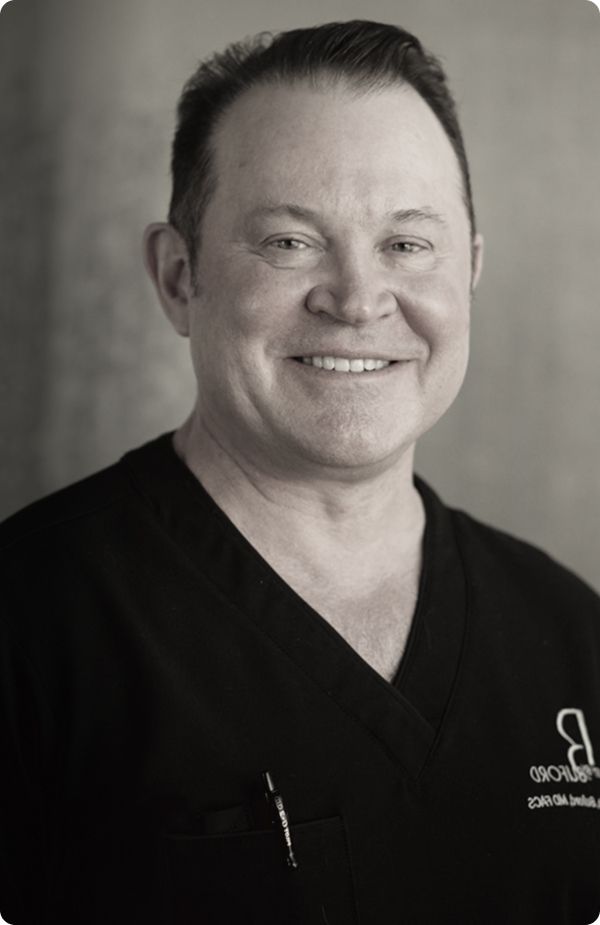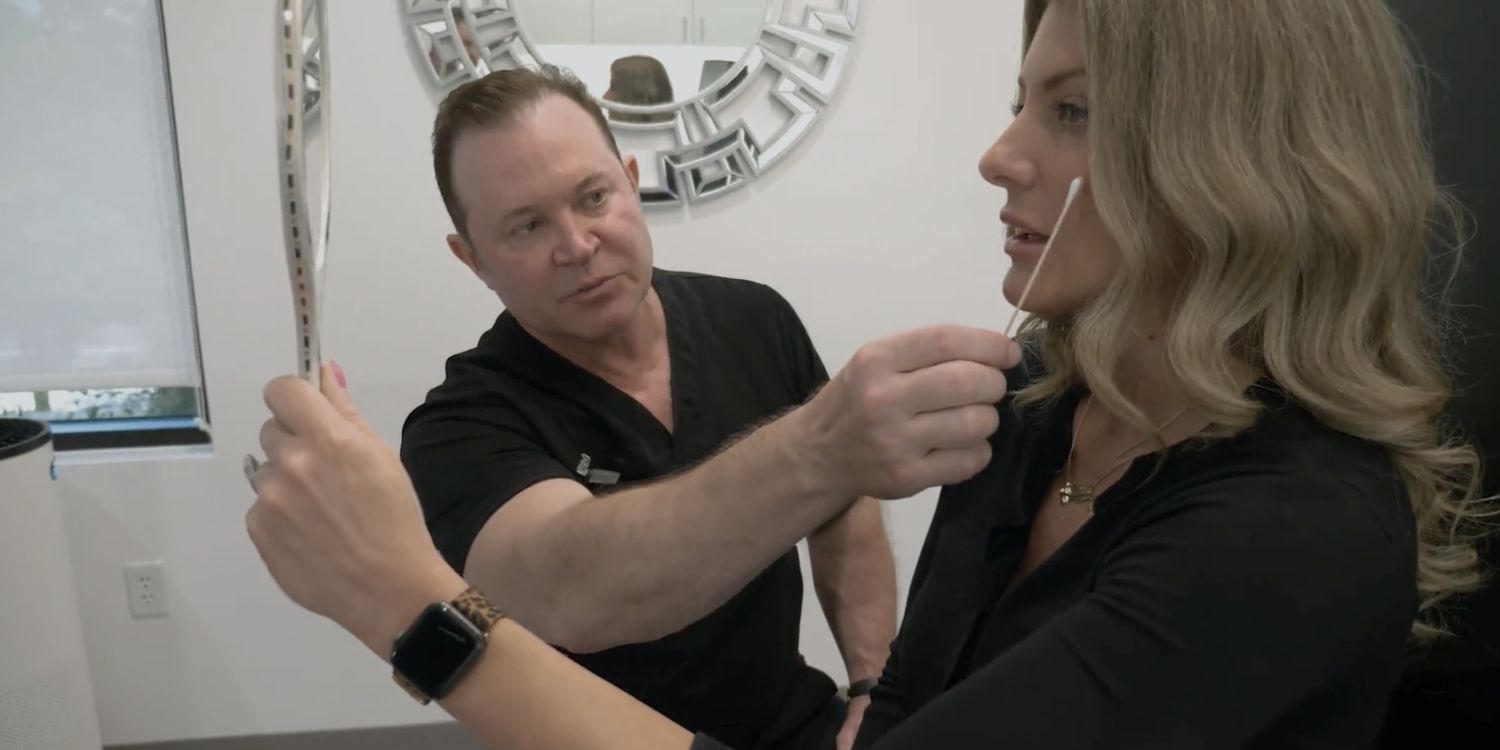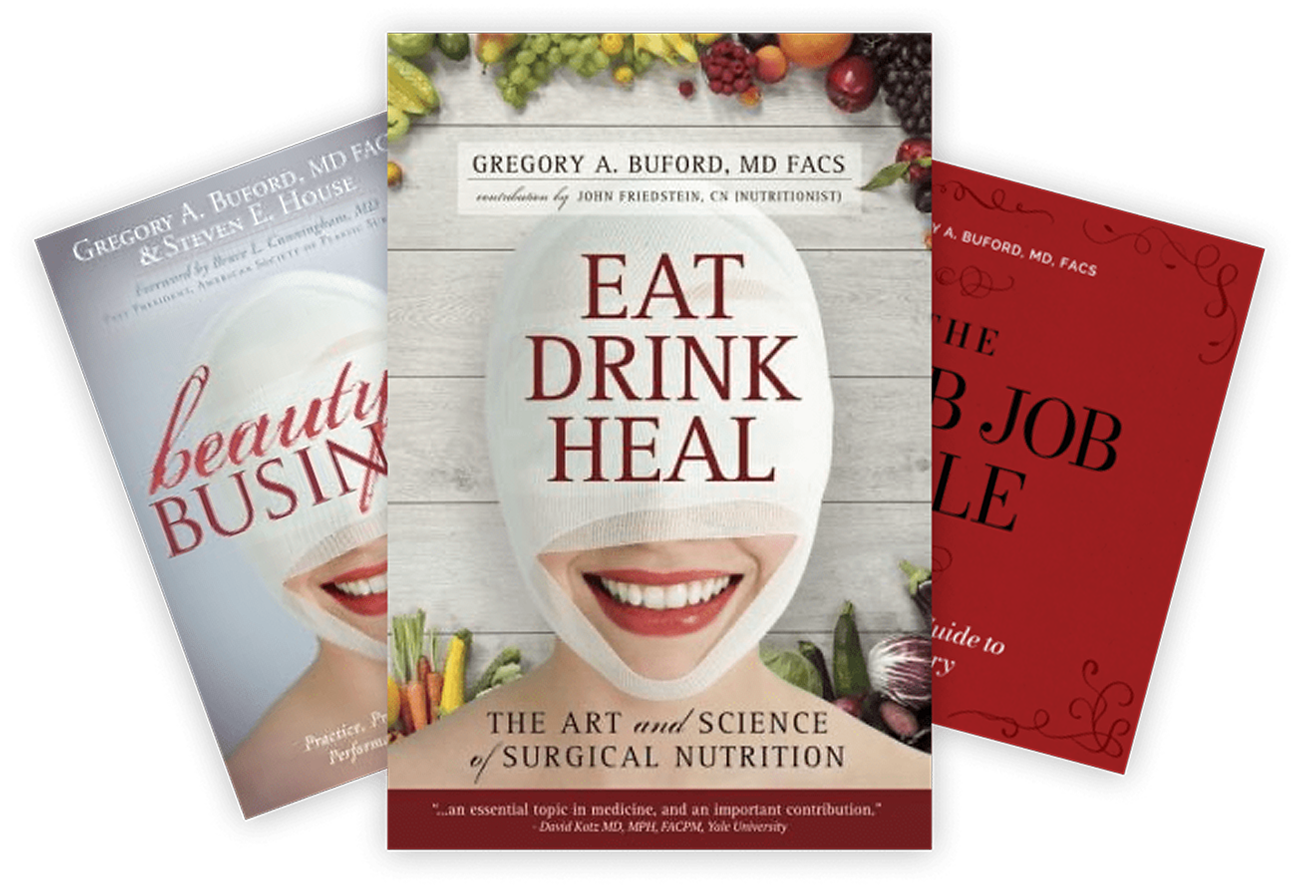









It’s simple: you deserve to love the skin you’re in. If you’ve made the decision to take control of your beauty story and are considering a plastic surgeon to guide you along the way, Gregory A. Buford, MD, FACS, PCEO, is the board-certified plastic surgeon Denver residents and guests can trust. He has helped thousands of women and men enhance their confidence through meticulously crafted care.
Here at BEAUTY by BUFORD, your health, happiness, and comfort are our top priorities. Cutting-edge science paired with artistic vision gives you natural-looking results that exceed expectations. With decades of experience, thousands of procedures performed, and numerous accolades to his name, Dr. Buford is here to serve you as you define your look and change your life for the better. Embrace the beauty you deserve with the help of Dr. Gregory Buford and his caring team at BEAUTY by BUFORD.

25,000+ Procedures Performed • 25+ Years of Experience • Nationally Recognized







Imagine finally reaching your aesthetic goals—feeling confident and vibrant at the beginning of each new day. Dr. Gregory A. Buford is here to help make that vision a reality. Dr. Buford is nationally recognized for his artistic eye and personalized, informative, and empathetic approach. He’s passionate about helping you see your best self, so you’ll get only the best plastic surgery in Denver.
As one of the nation’s leading experts in minimally invasive techniques, Dr. Buford delivers results that are as natural-looking as they are stunning. But his dedication goes beyond the procedure itself. At BEAUTY by BUFORD, collaboration is part of the journey. Here, you are empowered every step of the way, ensuring you feel informed, supported, and excited about your transformation.

At BEAUTY by BUFORD, we believe in a collaborative and patient-centered approach to aesthetic care. Our team works together to understand your unique goals and provide personalized recommendations. We take the time to discuss your desired outcomes and ensure that the chosen treatments align with your expectations.
Our patient care coordinators play a vital role in creating a seamless and supportive experience. They are dedicated to guiding you through your aesthetic journey, addressing your questions, and ensuring your comfort and satisfaction. By working together as a cohesive team, we strive to provide comprehensive care that addresses both your aesthetic and emotional needs. Our goal is to help you achieve your desired results while feeling empowered and supported throughout the process.
Dr. Buford's expertise in surgical procedures can transform your appearance and boost your self-confidence. With over 25 years of experience, he has honed his skills to deliver exceptional results. Whether you're considering a facelift, breast augmentation, or body contouring, Dr. Buford's personalized approach ensures that your goals are met. His commitment to patient satisfaction and his dedication to providing the highest quality care make him a trusted choice for surgical procedures.

Breast augmentation is a popular surgical procedure that can enhance your natural beauty and boost your self-confidence. By increasing the size and fullness of your breasts using implants or fat transfer, this personalized procedure can improve your body proportions and create a more balanced silhouette. Whether you're seeking a subtle enhancement or a more dramatic transformation, breast augmentation with Denver’s premier breast specialist can help you achieve your desired results.

A breast lift, or mastopexy, is a surgical procedure designed to correct sagging or drooping breasts. By repositioning the breast tissue and removing excess skin, a breast lift can help restore a more youthful and uplifted appearance. This procedure can be performed alone or in combination with breast augmentation to achieve optimal results. Explore the benefits of a breast lift, and discuss your tailored treatment with a board-certified plastic surgeon to restore your breasts’ naturally youthful quality.

A mommy makeover is a comprehensive approach to restoring your pre-pregnancy body. This personalized package of procedures can address various concerns, including sagging skin, excess fat, and weakened abdominal muscles. By combining procedures like breast augmentation, tummy tuck, and liposuction, you can achieve a more toned and sculpted physique. Get your “Before Baby Body” back with Dr. Buford’s enhanced mommy makeover package, and achieve your most natural and comprehensive results.

A tummy tuck, or abdominoplasty, is a surgical procedure that can remove excess skin and fat from the abdomen. This procedure can tighten the abdominal muscles, improve the contour of your midsection, and enhance your overall body shape. A tummy tuck can be particularly beneficial for individuals who have experienced significant weight loss or pregnancy. With tailored treatment and advanced techniques, Dr. Buford offers impeccably natural-looking tummy tuck results to ensure your most confident future.

Liposuction is a body contouring procedure that can remove excess fat from specific areas of the body, such as the abdomen, thighs, hips, and arms. This procedure can help to create a more sculpted and defined physique. Liposuction can be performed alone or in combination with other procedures, such as a tummy tuck or breast augmentation. Dr. Buford offers expertly crafted comprehensive treatment plans and seamlessly natural-looking results.

Breast revision surgery is a procedure that can address issues that may arise after a previous breast augmentation or reduction. This may include addressing asymmetry, implant replacement, or capsular contracture. Breast revision can help you achieve a more natural-looking and aesthetically pleasing result. Dr. Buford has performed thousands of breast procedures, offering an exceptional level of experience. Embrace your best confidence with the help of a breast procedure specialist.


BEAUTY by BUFORD sets the standard when it comes to quality—our stunning results speak for themselves.

At BEAUTY by BUFORD, we've designed our plastic surgery center and med spa in Lone Tree, CO, with your comfort and convenience in mind. Our modern and welcoming space is equipped with the latest technology to ensure a seamless and enjoyable experience.
We partner with local surgery centers for complex procedures, and our state-of-the-art surgery room is equipped to handle a variety of surgical interventions on-site. This allows us to offer a wider range of treatments and greater flexibility for your convenience. Our office also features advanced laser technology and other high-end aesthetic equipment to provide you with the highest-quality care. Every detail of our facility is thoughtfully designed to create a comfortable and relaxing atmosphere where you can feel at ease, all while receiving the absolute highest-quality care.
At BEAUTY by BUFORD, our team of highly skilled injectors is dedicated to providing exceptional results with every treatment. Led by Dr. Gregory A. Buford, a highly sought-after expert in facial injectables, our injectors receive rigorous training to ensure impeccable results.
Dr. Buford's commitment to excellence extends beyond his own practice. Professionals from around the world consult Dr. Buford for his expertise in facial injectables and attend his training programs. By sharing his knowledge and passion, Dr. Buford elevates the standards of aesthetic medicine around the nation.
Choose BEAUTY by BUFORD for expertly administered injectables that will enhance your natural beauty and boost your confidence.


In addition to our full menu of surgical procedures, we also offer a broad range of non-surgical aesthetic treatments to suit your unique needs. Effective as standalone treatments or combined with your surgical plan, these state-of-the-art options can provide you with impeccable results. Browse our featured treatments, and schedule your consultation to curate your personalized treatment plan at BEAUTY by BUFORD.
Botox and fillers are versatile injectable treatments that can help to rejuvenate your appearance and address a variety of aesthetic concerns. Botox is used to relax facial muscles and reduce the appearance of wrinkles, while fillers can restore volume, refine contours, and enhance facial harmony and definition, and improve lip volume.

MOXI and BBL are advanced laser technologies that can help to improve skin texture, reduce wrinkles, and treat pigmentation issues. Collectively, these advanced treatments can help you tackle concerns like fine lines, uneven skin tone, enlarged pores, sun damage, and acne scars.

Semaglutide and tirzepatide are medications that, when combined with a healthy diet and exercise, can help you achieve and maintain your weight loss goals. Our personalized SlimShot plan is designed to streamline your journey to lasting confidence and health.

Our lip filler treatments use a variety of products, including Vollure, Volbella, and Kyssé, to enhance your lips and create a more youthful and attractive appearance. These fillers can help to add volume, define your lip shape, and reduce the appearance of fine lines.

Renuvion is a minimally invasive procedure that uses radiofrequency and plasma energy to tighten and contour your skin. This treatment can help to reduce the appearance of wrinkles, sagging skin, and cellulite in various areas, like the face, neck, abdomen, and arms.

Aveli is a non-invasive treatment that uses radiofrequency and ultrasound energy to reduce the appearance of cellulite. This innovative technology can help to smooth and tighten your skin, giving you a more contoured and toned appearance.


Dr. Buford wrote three books that can provide the information you need to help you feel confident and prepared for your procedure:

“I just completed my one-month post-op with Dr. Buford, and I could not be happier with my results and the exceptional professionalism and artistic talent of Dr. Buford! He and his staff are so kind and professional; they made me feel comfortable right from the start, and it has been almost a year in the making. I absolutely love the breast augmentation revision that he did. I will absolutely only be coming to BEAUTY by BUFORD for any and all cosmetic enhancements in the future!”
–P.O., Denver breast augmentation patient.
“Dr. Buford and his team were great! They were able to schedule everything very quickly and Vivian was amazing at checking in on all aspects leading up to surgery. I had a breast lift with implants and Dr. Buford did an amazing job selecting the size of implant to fit my frame. When I took the tapes off my incisions, I was pleasantly surprised at how great my incisions looked. They are not noticeable at all. Great job team!”
–L.O., Denver breast lift with implants patient.
“My breasts look amazing! Dr. Buford did a Bilateral Implant Exchange for me. I wanted to go bigger and for a higher profile look, but I wasn’t exactly sure how much bigger I wanted to go. I trusted Dr. Buford’s judgment based on my goals & WOW. I couldn’t be happier with my results. I highly recommend Dr. Buford! For Botox also.”
–A.L., Denver breast implant exchange and Botox patient.
“I had a tummy tuck, muscle repair, lipo and breast lift/augmentation with Dr. Buford 2 months ago. I am a nurse and am picky about surgeons that I like and trust and Dr. Buford checked all the boxes. He’s a good communicator, cares about results, and a perfectionist. But overall, NICE and respectful! … I mostly appreciated him as a fellow medical professional and am AMAZED by my results. I now have the body I dreamed of even before I had 3 kids. My expectations were exceeded and I know I can trust Dr. Buford in the future for any other plastic surgery I may want or need.”
–A.C., Denver mommy makeover patient.
“Had a breast augmentation and came in for the complimentary Botox they offer with the augmentation and both times were out of this world. Dr. Buford is so professional and amazing at what he does, the augmentation result was PERFECT. Better than I could have imagined. The process was smooth and easy and recovery was the same. The support staff and nurses at the office and at the hospital are incredible. I cannot recommend BEAUTY by BUFORD enough. Thank you!!!”
–K.W., Denver breast augmentation and Botox patient.
“Lauren is the best!! I trust her with my life. My Botox and filler always look flawless. She has such a natural aesthetic. I leave feeling like my younger self with a 10 year nap.”
–B.L., Denver Botox and filler patient.
“Switched to here from my previous place. Lauren Mitschrich and Hannah have worked wonders on my skin and I just adore the welcome I feel each session. This is hands down the place for all your Botox and filler desires.”
–R.B., Denver injectables patient.
“I got lip filler with Lauren and had a great experience. As a first timer, I had about 100 questions and she patiently and thoroughly answered them all, and also did a great job at explaining the whole process. Lauren made me feel super comfortable and her extensive experience and knowledge also made me feel like I was in very great hands. You can tell she values a balanced and natural approach, and will only do what works best for you. Highly recommend to anyone!”
–E.I., Denver lip filler patient.
“Doctor Buford has been amazing. I came to him for a breast revision. After 2 surgeries with another surgeon, I had severe capsular contracture in one breast and a ruptured implant in the other. I was so physically uncomfortable and obviously self-conscious about the appearance… He did such an amazing job. They look better than ever before. Recovery was easy in comparison to my previous experiences. Everything, from my initial consultation throughout this entire process, has been so much better. I would recommend doctor Buford to anyone looking into breast augmentation and/or revision.”
–S.V., Denver breast revision patient.
“I’ve seen Dr. Buford for two procedures now. The most recent being liposuction. I am beyond happy with the results. I’m 3 months post surgery and my clothes are loose, my stomach is flat, my love handles are non-existent and most importantly I feel the best I’ve ever felt! If you’re contemplating liposuction, I would personally recommend Buford and his team. Not only is he able to do the procedure in his own facility, they offer Pronox which was a life changer in helping me relax. You’re in the best hands with Buford and his team.”
–D.R., Denver liposuction patient.











